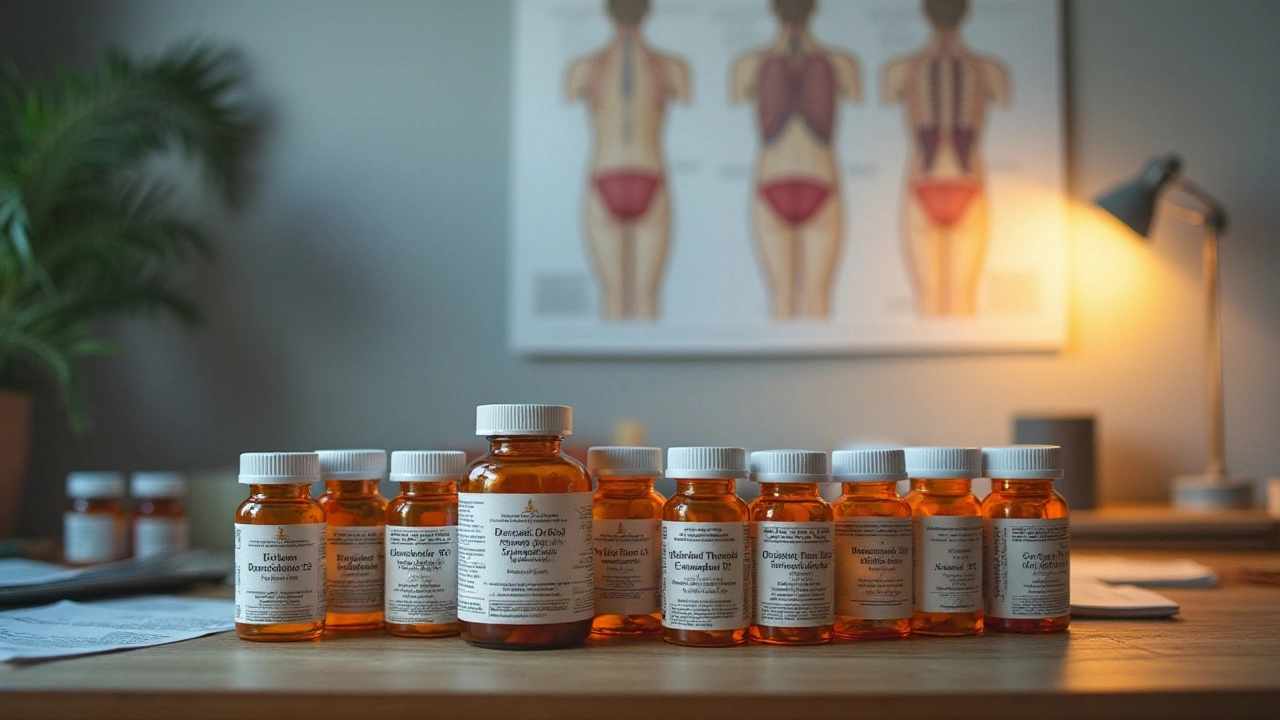If you’ve been prescribed levothyroxine (the synthetic T4 hormone) but need a switch—maybe due to side effects, cost, or a doctor's recommendation—you’re not alone. Many patients wonder which meds or natural products can keep their thyroid on track without causing a roller‑coaster of symptoms. Below you’ll find the most common prescription swaps, a few over‑the‑counter ideas, and practical tips for making a smooth transition.
First off, the easiest swaps stay in the prescription world. Doctors often turn to these when levothyroxine alone isn’t cutting it:
Liothyronine (Cytomel) – This is synthetic T3, the active hormone that levothyroxine turns into inside your body. Some folks feel better on a combo of T4 and T3, especially if they still have fatigue despite normal TSH levels. Dosage is usually lower than levothyroxine, so start small and adjust under medical supervision.
Liotrix (Armour Thyroid) – A blend of T4 and T3 derived from animal thyroid tissue. It mimics the natural hormone mix your body makes. Because it’s not 100% synthetic, some patients swear by it for mood and energy, but the exact hormone content can vary batch‑to‑batch. Consistency checks are a must.
Combination Therapy (T4 + T3) – Some endocrinologists prescribe separate pills of levothyroxine and liothyronine together. This lets you fine‑tune the T4/T3 ratio to your needs. It requires regular blood tests to avoid overtreatment, which can cause rapid heartbeats or bone loss.
Switching to any of these requires a doctor’s order, a baseline lab panel, and a clear plan for monitoring. Most patients see labs every 6–8 weeks after the change, then settle into once‑a‑year checks once stable.
If you’re looking for non‑prescription help, a few nutrients can support thyroid function. They won’t replace hormone therapy, but they can smooth out mild deficiencies.
Selenium – This trace mineral helps convert T4 into T3. A daily dose of 100‑200 µg (usually found in Brazil nuts or supplements) can improve thyroid hormone conversion in some people.
Iodine – Essential for making T4 and T3, but too much can backfire. Most U.S. diets already hit the recommended 150 µg per day via iodized salt. Only supplement if a doctor confirms a deficiency.
Vitamin D – Low vitamin D levels are linked to autoimmune thyroid disease. A simple blood test can reveal if you need a boost; supplements of 1,000‑2,000 IU daily are a common starting point.
Adaptogenic Herbs (Ashwagandha, Rhodiola) – Some users report better energy and less fatigue, but evidence is mixed. If you try them, keep the dose low (e.g., 300 mg of ashwagandha extract) and watch for any jittery feeling.
Remember, natural options work best when your thyroid labs are already in range. If you’re still hypothyroid, hormone replacement will remain the cornerstone of treatment.
**Bottom line:** Whether you move to liothyronine, a T4/T3 mix, or add supportive nutrients, the key is a clear plan with your doctor. Get baseline labs, track symptoms, and adjust slowly. That way you avoid swings in energy, mood, or heart rate, and you’ll feel confident that your thyroid stays on track no matter which levothyroxine substitute you choose.

Synthroid, a common medication for hypothyroidism, has several alternatives that might better suit individual needs. Each alternative offers its own benefits and drawbacks, ranging from natural desiccated thyroid extracts to synthetic hormone options. This article delves into nine alternatives to Synthroid available in 2024, discussing their unique features, advantages, and potential downsides. Patients are encouraged to consult with healthcare professionals to determine the best option for their thyroid health.